
How to Grow and Care for Begonias
Published: 17/07/2024 | Updated: 17/07/2024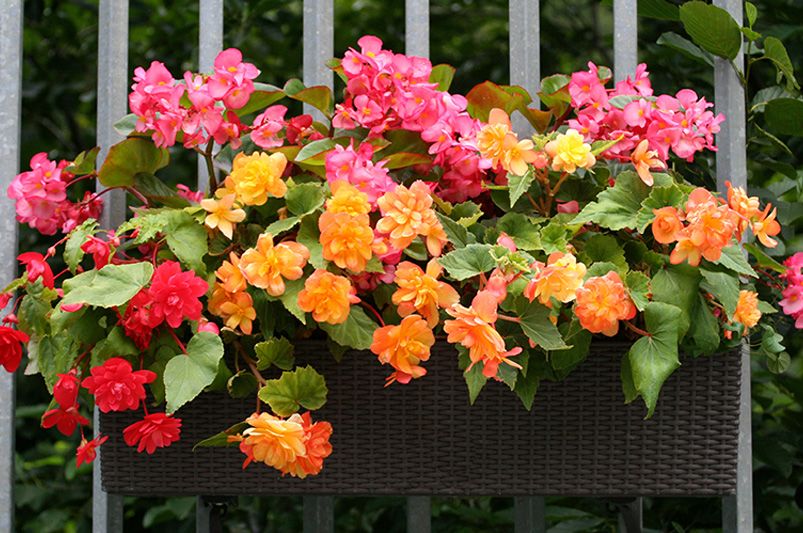
Begonias are traditional houseplants adored worldwide for their colorful blooms and lush foliage. Their blend of robust, stiff leaves with geometric edges and huge, vibrantly colored summertime blooms shows why they are so popular.


Specific begonia cultivars yield pink, red, or yellow flowers, while others have white petals with pink centers. This flowering plant's popularity can be attributed, in part, to its ease of maintenance. The begonia plant is one of the few houseplants that don't require specific lighting or fertilization, making it a fantastic option for people who only have a little time to dedicate to their plants.
Climate
Begonias can bloom for extended periods and require very little upkeep. These tropical plants are generally grown as indoor houseplants in cooler climes or as outdoor annuals throughout the summer. Landscapers frequently employ them in outdoor container arrangements because of their vibrantly coloured leaves and blossoms. These beautiful flowering plants prefer soil that is somewhat acidic and partially shaded. The roots could poison some animals. See our care guide by reading on.
In most parts of the United States, begonias can be cultivated as annuals because they act as short-lived perennials in the states and as perennials in their natural environments. However, with the proper care, certain species can live for two or more seasons in warmer climates.
Sunlight
In pots, tuberous begonias require some sun, although not too much; just a couple of hours is enough. Begonias thrive best indoors in indirect light. When planted in a garden, wax or fibrous begonias will regularly bloom in partly or shaded conditions. The delicate petals could wilt with too much sunlight, or the colors could fade.
Soil Preferences
Rich, porous, somewhat acidic soil is ideal for begonia growth. Begonias do well in soils based on peat and have a lot of organic content, such as leaf mould. Proper drainage is necessary. Begonias also work well with a simple potting mix, such as the kind used for African violets.
Watering
Water your begonia well once a week, but do not water it until the top half inch of soil is completely dry. Begonias should never be overwatered because this might cause root rot.
Humidity and Temperature
The ideal growing temperature range for begonias indoors is between 65 and 70 degrees Fahrenheit. When the nights and days get colder, fibrous begonias placed in the garden should be delicate with cool late summer evenings. However, they will go dormant. Begonias are tropical plants that prefer a little humidity, about 50%. Begonias benefit from having a saucer of water next to them or having a humidifier in the room, especially in homes where the winter heat tends to dry out the air.
Pruning
Begonias may occasionally require minor pruning in addition to deadheading to remove damaged or dead stems or leaves.
Tips to Plant Begonias Growing Begonias
Rhizomes, tubers, or leaf cuttings can all be used to propagate begonias. Here's how:
▸ Put a leaf clipping in water in a shaded area during the day.
▸ Plant in potting soil after roots begin to form.
▸ In a few weeks, rhizomes and tubers that have been gently pressed into moist potting soil should start to sprout new growth.
Potting & Containers
Begonias thrive in pots both indoors and outdoors. A well-drained terracotta container is ideal for outdoor use, and good drainage should also be a feature of indoor containers. The begonia may occasionally need to be repotted to give it additional space as the tubers or rhizomes grow. Gently pluck the tubers or roots and transfer them to a new container filled with fresh potting soil. Lightly water the plant.
Typical Pests and Plant Illnesses
Begonias are generally unaffected by pests or illnesses. However, beware of overwatering, which can result in powdery mildew, stem rot, and root rot. Mealy bugs, spider mites, snails, and slugs are the primary pests that can harm begonias. The latter two love to eat the leaves and are simple to deal with—just remove them by hand.
Begonia Flowers
Begonias have weeks-long blooms in the summer, which lasts until late October. Depending on the kind, begonias can bloom continuously when housed inside. Yes, tuberous begonias experience a period of dormancy that can last for a few weeks, during which their leaves and blossoms wither away. However, some begonia varieties have year-round blooms. Ensure you stick to the maintenance guidelines set for the kind of begonia you own.
How Do Begonia Flowers Appear?
Begonia flowers can be red, pink, yellow, white, or orange and bloom singly or in pairs.
How to Promote Blooms
Regular fertilizer application can help begonias continue to bloom. The secret is to use diluted liquid fertilizer and apply it lightly. Fertiliser should never be applied to dry soil. Deadheading frequently is also necessary to maintain the plant's optimum condition and encourage the most blooms.
Typical Growing Issues
Flowers Withering
Your begonia may receive too much direct sunshine if the flowers appear to be fading or turning brown. Go to a partially shaded or indirect area.
Not Blooming
If your begonia plant isn't blossoming, it may be due to inadequate or excessive watering, harsh weather, or insufficient light. To promote bloom, make sure everything is flourishing at its best.
Begonia Varieties
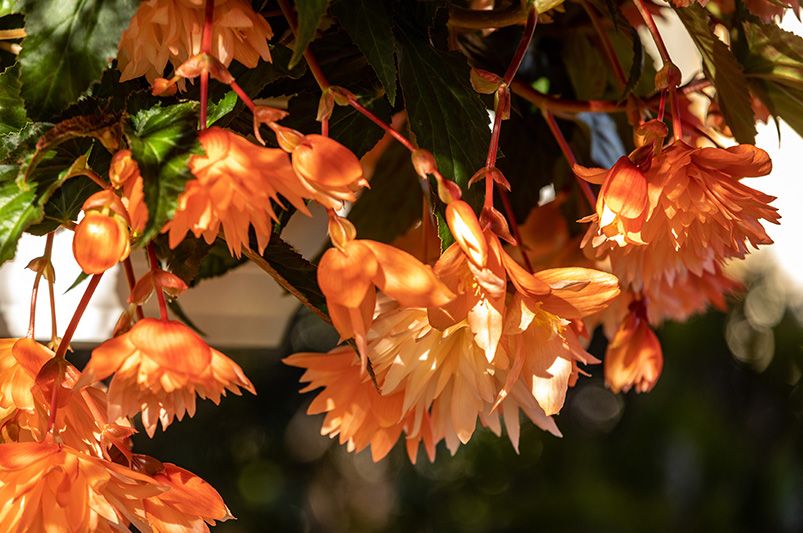
Bellagio Apricot Begonia
Bellagio Apricot is a stunning and vibrant Begonia variation named for its apricot-tinted flowers. A tuberous plant fares very well in partial shade and well-draining soil, so it's a fantastic choice for garden beds, hanging baskets, or containers, i.e., it does well both in and outdoors. Water it regularly and give it a well-balanced fertilizer to encourage growth and blooms. The beautiful Bellagio Apricot begonia adds a touch of warmth and sunshine to any garden.
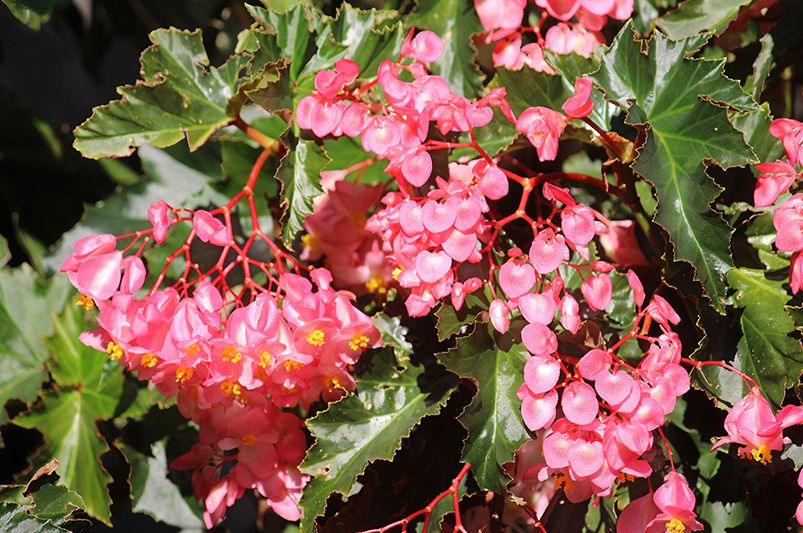
Angel Wing Begonia
Minimal upkeep plants, such as the charmingly named angel wing begonia, require somewhat damp, slightly thick soil naturally high in organic content. They thrive best in bright, indirect light. Their leaves will turn yellow to indicate when they need water, which they need very frequently. 65 to 75 degrees Fahrenheit is optimal for these pretty shrubs. You want to try to monitor temperature control here as lower temperatures can damage or even kill the plant, so it is imperative to monitor temperature regulation. They also love humidity, so aim to mist the plant regularly to maintain it. If you don't live in a humid region, one top tip is to place the plant in a damp room like the kitchen or bathroom.
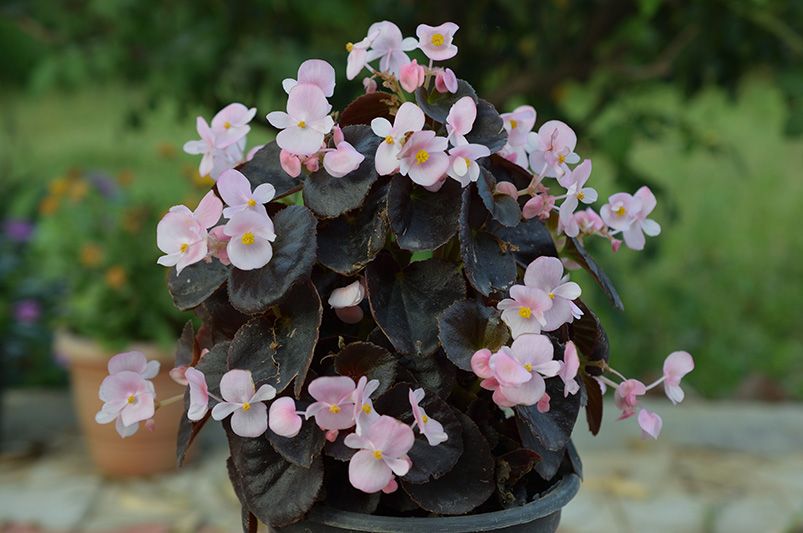
Wax Begonia
Sunshine Begonias with bronze leaves typically withstand intense sun slightly better than those with green leaves. Wax begonias need as much bright light as possible when grown indoors in pots. The ideal windows face east, west, or south since they let in enough light. Artificial grow lights can be used to promote healthy growth in indoor wax begonias if there are insufficient windows or if you live in an area that doesn't get much sun. Whether you place them by a window or use a grow light, these sun-loving plants should receive about eight to ten hours a day. These begonias prefer mild to moderate temperatures. Like all begonias, they will flourish at temperatures over 60 degrees, but they detest drafts and cannot withstand freezing.
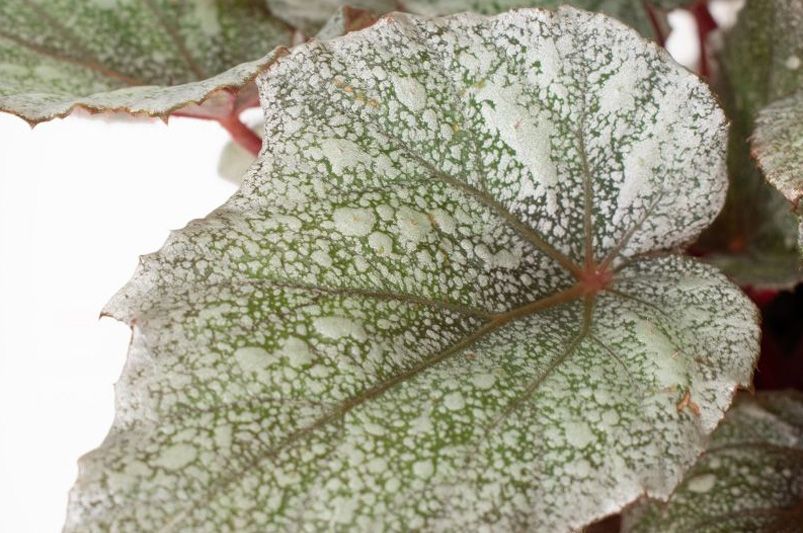
Rex Begonia
Begonia rex is the parent plant of several hundred hybrids, with too many varieties to list. In the trade, the resulting hybrids are frequently only recognised by elaborate trade names that are applied to the plants for sale. Because of this, you may discover that different garden centres have different names for the same crosses. The iron cross begonia, or B. masoniana, is one intriguing and lovely variety. The leaves of this beautiful shrub, which was brought to cultivation in 1952, are puckered and feature a black cross in the centre. It comes in a range of hues.
All year long, Rex begonias prefers bright, indirect light. They can withstand less light than other begonias because they are not aggressive bloomers, and they will flourish in fluorescent lighting.
Rex begonias thrive best in soil that is bright, airy, and quickly drains. In containers, their delicate root systems require well-aerated potting soil that is based on peat.
Regular watering is necessary for Rex begonias, but overwatering plants should be avoided. The soil ought to feel uniformly moist but not overly so. Rex plants like dampness, just like other begonias do. However, if you shower the leaves, ensure they don't stay too wet, as this can lead to powdery mildew in temperatures between 60 and 70 degrees Fahrenheit.
Freezing conditions will impede growth, and the absence of light during winter causes some begonia species to go dormant.
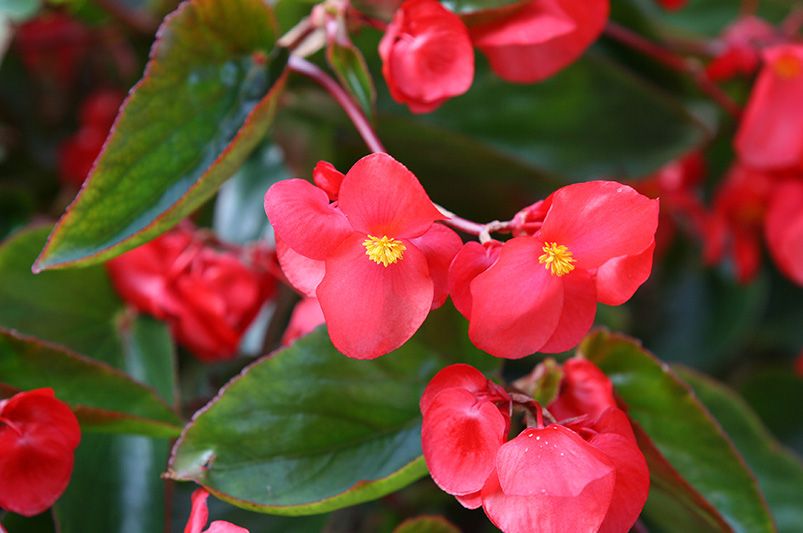
'Dragon Wing Red' Begonia
A begonia perfect for the South! Over warm bronze leaf foliage, Dragon Wing develops the large-flowered, strong series with two core colors. This hardy shrub thrives in both the hot climate of the southern United States and the chilly, demanding environments of northern Europe and Canada. Its distinct and exquisite arching habit makes pendulous plants look fantastic in hanging baskets, big containers, and commercial landscape plantings. Dragon Wing has a strikingly unusual appearance because of its angel-wing leaves and big blossoms. It is superior to vegetative kinds in terms of branching, vitality, and "flower power," it is simple to grow from pelleted seed.
Add Some Begonia Charm to Your Home Today
Whether you plant them indoors or outdoors, Begonias are in a class of their own. Loved for their vibrant, interestingly shaped blooms and geometric leaf patterns, their popularity has grown year by year, with green thumbs everywhere. With such a wide variety to choose from, from Angel Wings to Rex and Wax varieties, there's a Begonia for everyone. Remember the golden rule of Begonias: keep them humid and well watered, and give them plenty of sun, and you're on your way to creating a beautiful Begonia collection. Which one will you try first?


